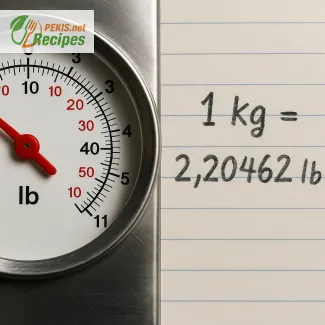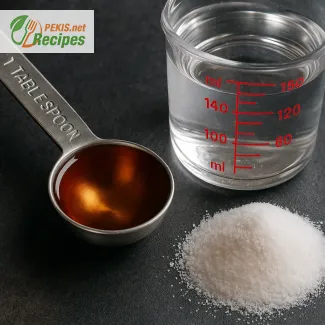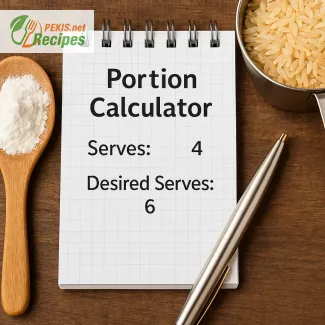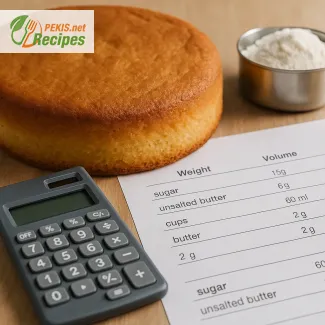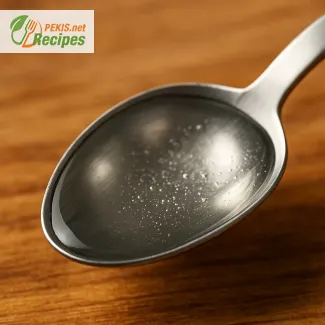
A US tablespoon equals 14.79 ml, slightly less than the metric tablespoon of 15 ml and much smaller than the Australian tablespoon of 20 ml. This difference matters in baking, cooking, and nutrition, where even small variations affect results. For quick reference, 1 tablespoon ≈ 3 teaspoons, and knowing whether a recipe uses US, metric, or Australian measures ensures accuracy. Using the right conversion helps maintain flavor, texture, and consistency across international recipes.
Understanding the Conversion from US Tablespoons to Milliliters
Why precise tablespoon to milliliter conversion matters
A US tablespoon to milliliter conversion is one of the most common unit questions in cooking, baking, nutrition, and product labeling. In the US system, 1 tablespoon equals 14.79 ml, while in many other regions the measure is slightly different, often rounded to 15 ml. This distinction may look minor, but in recipes with sensitive ingredients—like yeast, baking powder, oils, or liquid extracts—even a small deviation can change the outcome. Knowing the exact tablespoon in ml value helps home cooks, professional chefs, dieticians, and food manufacturers achieve consistency.
Historical background of tablespoons as a measure
The tablespoon originates from early household utensils used as measuring tools long before standardized cups and spoons were introduced. Over time, different countries formalized their own definitions. The US tablespoon remained slightly smaller than the metric or UK tablespoon. This explains why an American tablespoon in ml is not identical to international versions, making precise knowledge essential when translating recipes or product instructions.
Key differences between US, UK, and metric tablespoons
- US tablespoon = 14.79 ml (rounded to 15 ml in practice)
- Metric tablespoon = 15 ml (used in most countries)
- Australian tablespoon = 20 ml (unique and larger than others)
- UK tablespoon (pre-metric) ≈ 17.7 ml, though rarely used today
These variations highlight why understanding which tablespoon is meant can prevent confusion and ensure accurate results.
Why you will love this guide
- Clear explanation of 1 tbsp in ml (US) without confusion
- Quick reference to common global variations
- Practical context for both home cooking and professional kitchens
- Easy to remember values for faster conversions
- Trusted and straightforward breakdown for everyday use
Practical situations where precision is crucial
- Baking: Ingredients like yeast, baking powder, and vanilla extract are sensitive to even minor measurement differences.
- Cooking sauces: Too much or too little oil or vinegar can alter texture and flavor.
- Nutrition plans: Dieticians often rely on tablespoon to ml conversions when calculating calorie intake.
- Product packaging: International food companies must adapt serving sizes to regional units.
Comparison of tablespoon equivalents across regions
| Region / System | 1 Tablespoon in ml | Notes |
|---|---|---|
| US | 14.79 ml | Slightly smaller, often rounded to 15 ml |
| Metric (EU, Canada) | 15 ml | Standard in most recipes |
| Australia | 20 ml | Larger than most, important in baking |
| UK (historical) | 17.7 ml | Rare today, but still referenced in old recipes |
Everyday examples of conversion in action
- If a recipe from the US calls for 2 tablespoons of olive oil, the amount is 29.58 ml, not 30 ml exactly, though many cooks round it.
- A European recipe listing 30 ml of soy sauce equals 2 metric tablespoons, but if you use US spoons, you would need slightly more than 2.
- An Australian recipe requiring 1 tbsp sugar would be 20 ml, meaning almost 1 ⅓ US tablespoons.
Common mistakes when converting tablespoons to ml
- Assuming all tablespoons worldwide equal 15 ml
- Ignoring recipe origin and defaulting to metric
- Relying on rounded conversions in precise baking
- Confusing teaspoons (5 ml) with tablespoons
How ingredients behave differently with conversion
- Liquids like water, oil, or milk are more forgiving, since rounding 14.79 ml to 15 ml rarely affects outcome.
- Baking powders and yeasts are more sensitive, where exact 1 tbsp in ml (US) matters for rise and texture.
- Spices and extracts often taste overpowering if over-measured, reinforcing why understanding the US tablespoon conversion is critical.
Structured reference for quick learning
- 1 US tablespoon = 14.79 ml
- 1 Metric tablespoon = 15 ml
- 1 Australian tablespoon = 20 ml
- 1 tablespoon ≈ 3 teaspoons
- 1 teaspoon = 4.93 ml (US)
This structured knowledge allows quick adaptation when moving between recipes, cookbooks, or packaging labels, ensuring that whether you are cooking at home, working in a professional kitchen, or simply reading nutritional instructions, your conversions remain precise and reliable.
FAQ questionWhat is 1 US tablespoon in ml?
A 1 US tablespoon equals 14.79 ml (often rounded to 15 ml for convenience). If you need a quick mental check: it’s half of a US fluid ounce (0.5 fl oz), which is about 14.79 ml.
FAQ questionIs a tablespoon 15 ml or 14.79 ml—what should I use?
Use 14.79 ml for US recipes and 15 ml for metric recipes. The difference is tiny, but in precision baking it’s safer to stick to the system the recipe uses to keep texture and rise consistent.
FAQ questionHow many teaspoons are in 1 tablespoon (US), and what’s that in ml?
There are 3 teaspoons in 1 tablespoon (US). Since 1 tsp = 4.93 ml, 1 tbsp = 3 × 4.93 ml = 14.79 ml. Handy micro-conversions: ½ tbsp = ~7.4 ml, ¼ tbsp = ~3.7 ml.
FAQ questionWhy does Australia use a 20 ml tablespoon—and does it matter?
The Australian tablespoon is 20 ml, larger than the US (14.79 ml) and metric (15 ml) spoons. If you follow an Australian recipe with US spoons, you’ll under-measure. Convert first (e.g., 1 Aus tbsp ≈ 1⅓ US tbsp).
FAQ questionHow do I quickly convert tablespoons to ml without a calculator?
For US tablespoons, multiply by 15 and then subtract ~1% to approximate 14.79 ml. In practice, most cooks safely use 15 ml per tbsp as a fast rule. Example: 2 tbsp ≈ 30 ml (exact 29.57 ml).
FAQ questionCan I measure 1 tablespoon without a measuring spoon?
Yes: use 3 level teaspoons (US) to equal 1 tablespoon. Or pour to the 15 ml line on a ml-marked shot glass or small measuring cup—close enough for most dishes, while 14.79 ml is the precise US value.
FAQ questionDoes rounding from 14.79 ml to 15 ml change results?
For sauces, dressings, and most liquids, rounding to 15 ml is fine. For delicate baking (yeast, baking powder, strong extracts), stick to the exact system: use US spoons for US recipes or measure 14.79 ml to protect flavor and structure.
PEKIS – professional chef and recipe developer with over 25 years of experience, specialized in European and international cuisine. For this topic, I’ve worked extensively with unit conversions in baking and cooking, ensuring that even small differences like the US tablespoon in ml are explained clearly and used correctly in everyday recipes.
